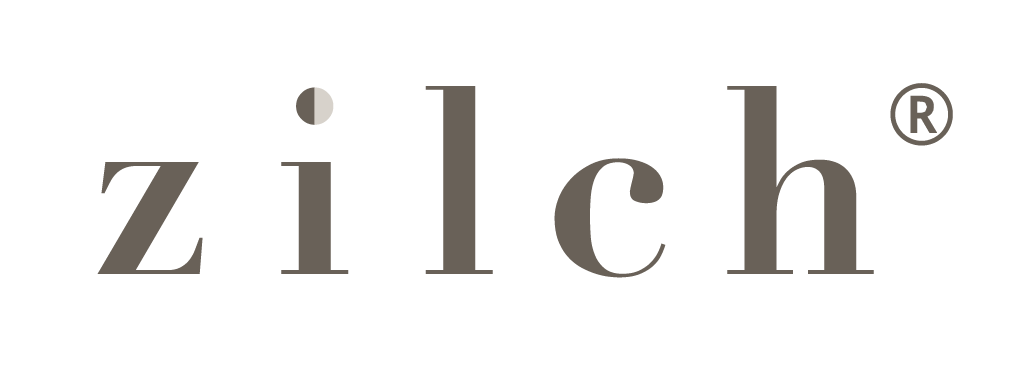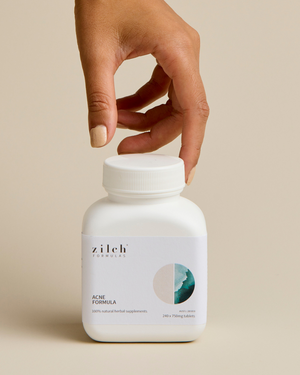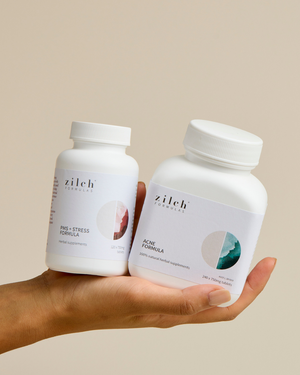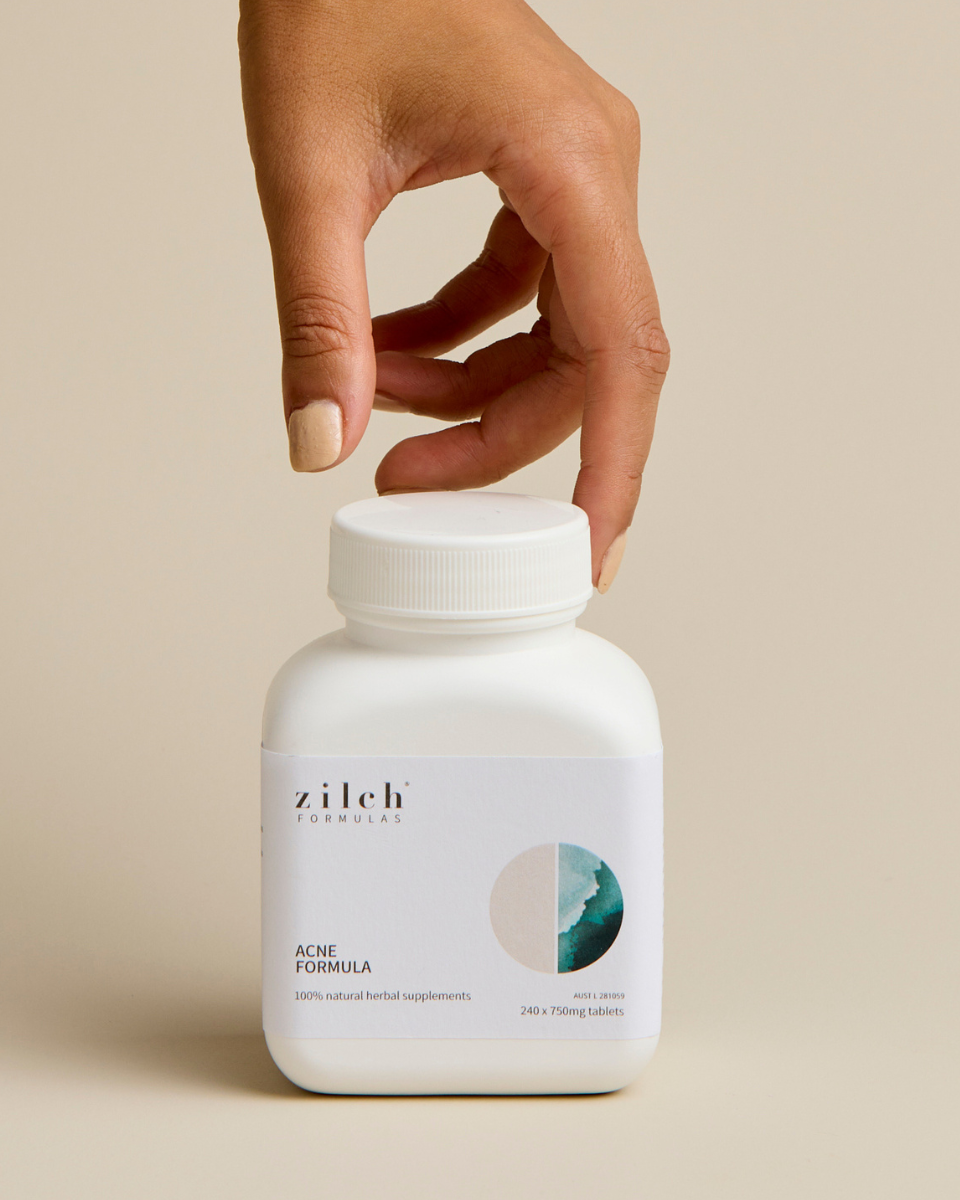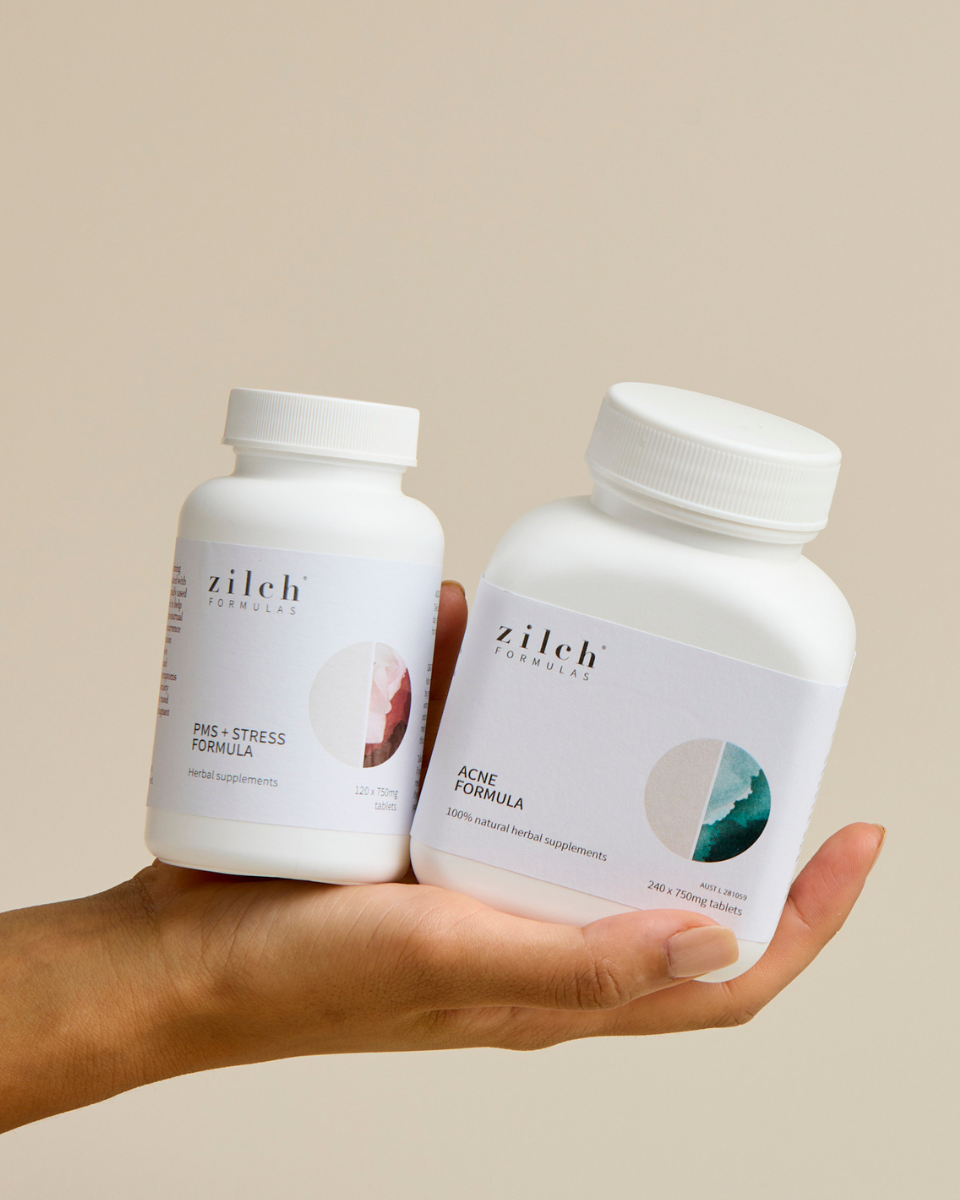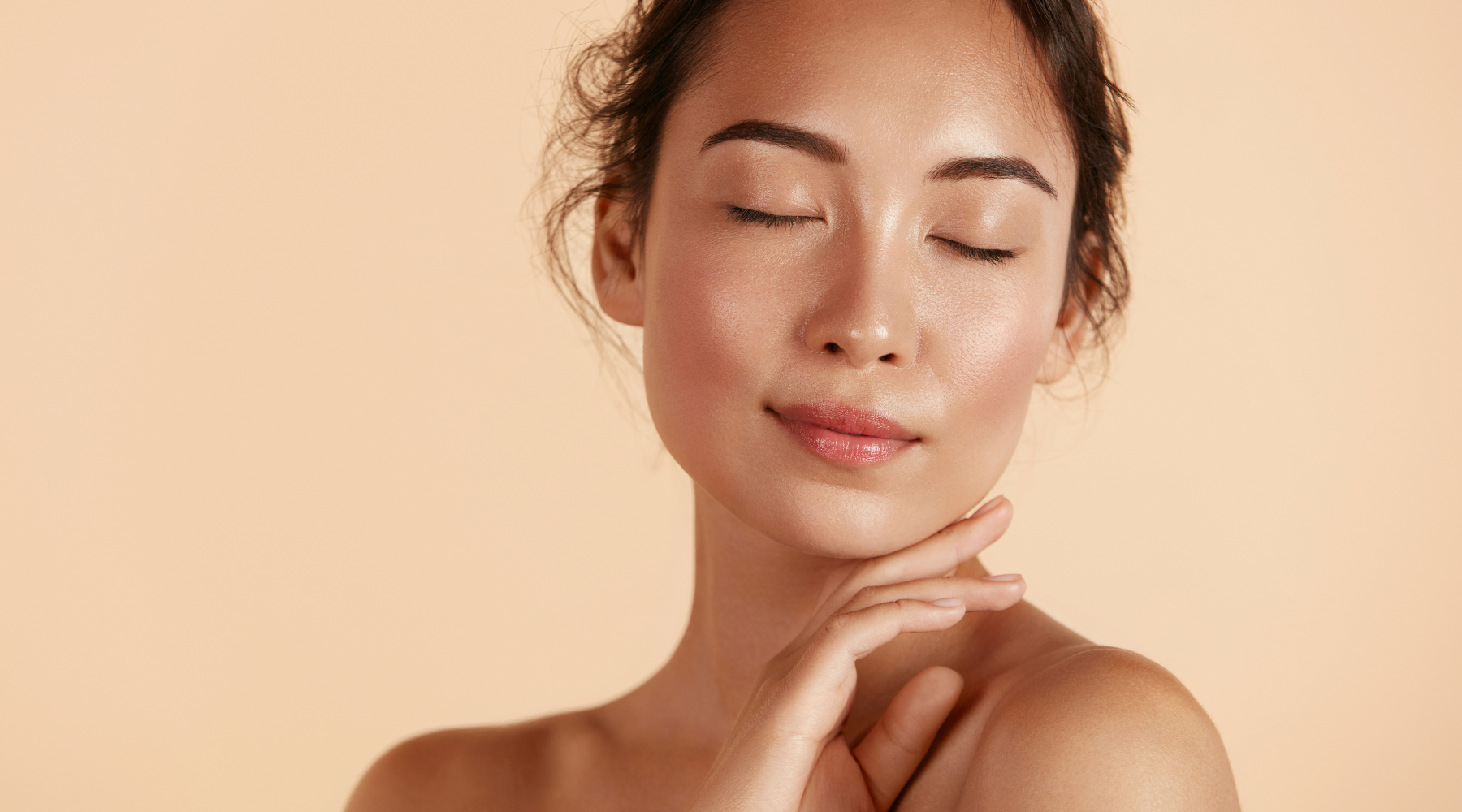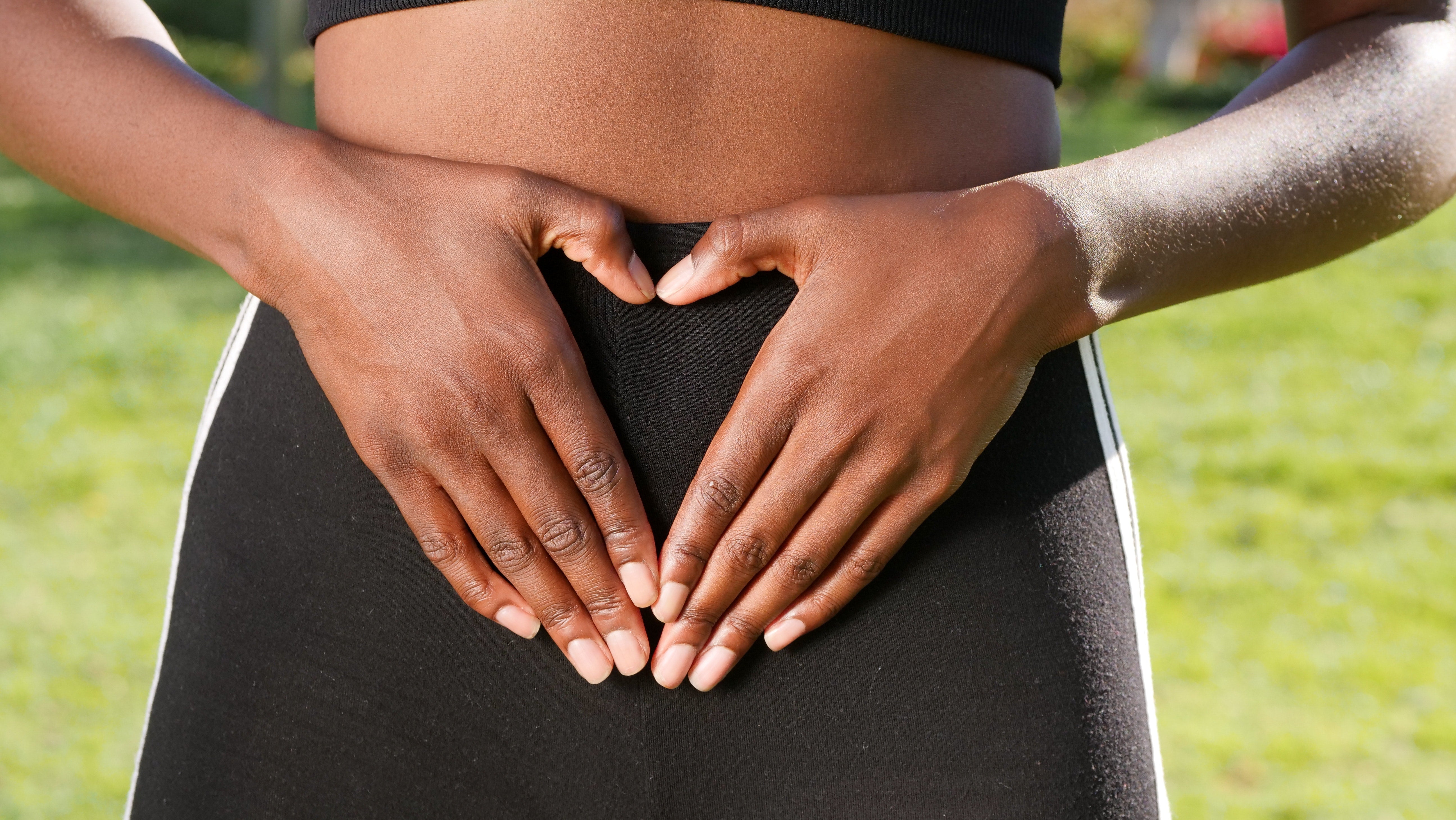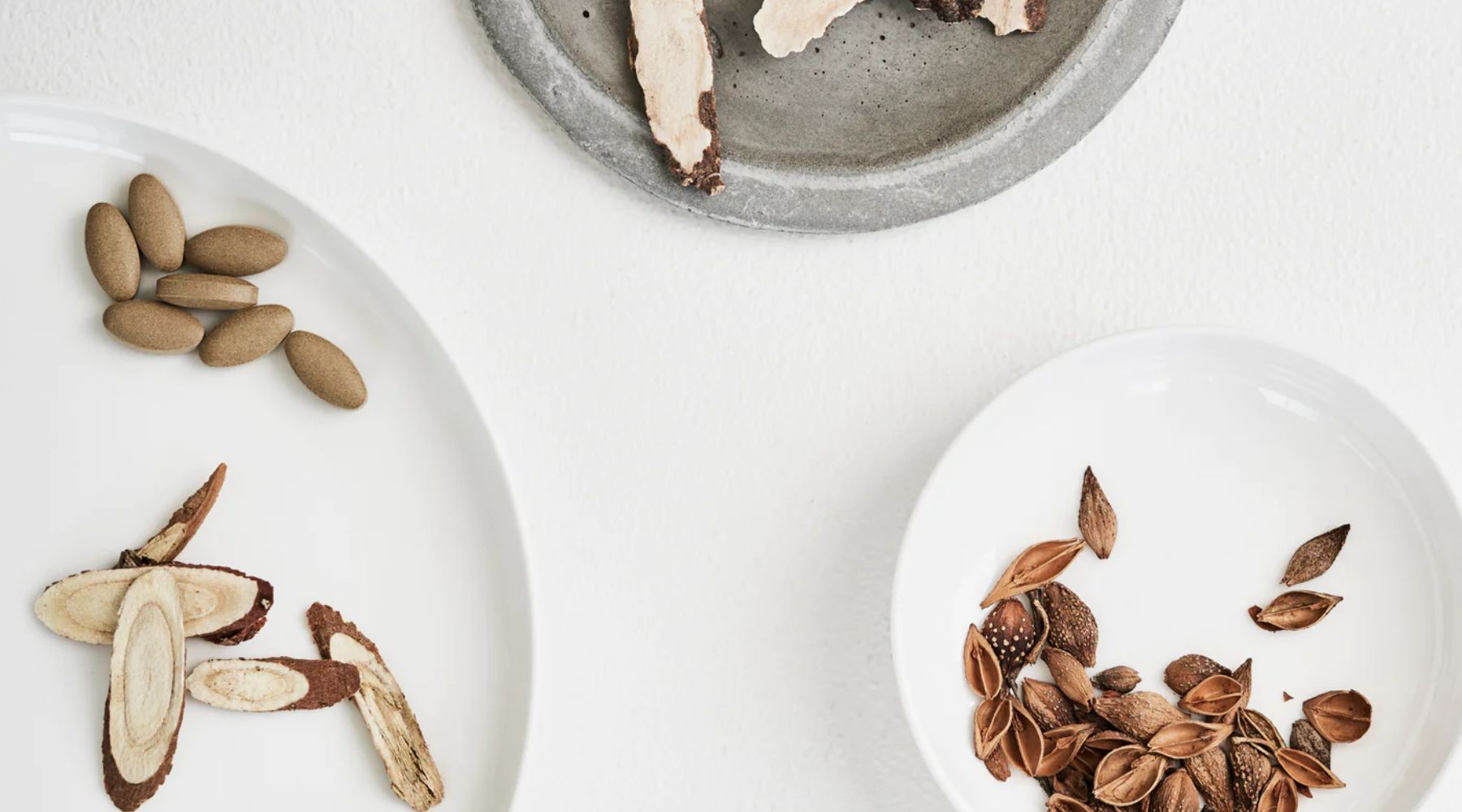
Herbal Ingredients in Chinese Medicine for acne
Chinese Medicine for acne
Chinese Herbal Medicine has been around for thousands of years, helping people with their health and their wellness. But what people don’t know is how powerful it can be against skin ailments.
Zilch Acne Formula is a patented all-natural, herbal supplement designed to help acne sufferers achieve clear skin confidence. The success of Zilch Acne Formula lies in its active ingredients’ ability to target the root cause of acne and promote skin health from the inside out.
It isn’t only about the 17 herbal ingredients working to clear inflammation, promote blood circulation, reduce toxicity, and promote healing, but also just as importantly about having a blend that works harmoniously together to achieve this without the nasties.
We’d love for you to meet these superhero Chinese Medicine herbal ingredients.
Tao Ren
Common Name: Peach Kernel.
Botanical Name: Prunus Persica.
In Chinese Medicine, blood stasis is believed to be at the root of deep, and sore acne. By promoting blood circulation and reducing blood stagnation, peach kernel can help reduce the severity of large acne bumps.
Hong Hua
Common Name: Safflower
Botanical Name: Carthamus Tinctorius
Prized for its circulation-boosting properties, safflower can alleviate deep, hard and sore acne by resolving blood stasis. By moving stagnant blood, the herb helps to improve healing and reduce acne pain.
Dan Shen
Common Name: Red Sage Root
Botanical Name: Salvia Miltiorrhiza
Cooling in nature, Red sage root helps to relieve the swelling and inflammation associated with acne by improving circulation and dispelling blood stagnation. This healing herb is ideal for those with persistent pimples.
Bai Hua She She Cao
Common Name: Hedyotis
Botanical Name: Hedyotis Diffusa
In TCM, it is known that while heat and toxicity lead to breakouts, dampness and heat create the perfect breeding ground for inflamed pustules. Reducing toxins and clearing heat, Hedyotis herbs can be beneficial for the management of pimples.
Bai Zhi
Common Name: Fragrant Angelica Root
Botanical Name: Angelica Dahurica
Traditionally, fragrant angelica root is used in TCM to encourage lymphatic drainage through the face by opening the nasal passages and relieving sinus blockages. In this acne formula however, it is used to help to alleviate the inflammation associated with large and painful acne.
Zao Jiao Ci
Common Name: Chinese Honey Locust
Botanical Name: Gleditsia Sinensis
Chinese honey locust benefits acne-prone skin by promoting healthy blood circulation, helping to reduce swelling by breaking up blood stagnation. This action can encourage acne to come to a head, helping resolve blemishes sooner.
Zi Hua Di Ding
Common Name: Viola
Botanical Name: Viola Yedoensis
In Chinese Medicine, heat, toxin build-up and sluggish blood circulation are considered key causes of acne. The viola plant addresses two of these issues, thanks to its heat-clearing, toxin-eliminating properties. Alongside the other herbs, it promotes lasting improvements in problem skin.
Jin Yin Hua
Common Name: Japanese Honeysuckle
Botanical Name: Ionicera Japonica
In Chinese Medicine, damp-heat is believed to contribute to skin eruptions (acne). By helping to clear heat and expel trapped toxins in the outer skin layers, Japanese honeysuckle can help reduce breakouts.
Pu Gong Ying
Common Name: Dandelion
Botanical Name: Taraxacum Mongolicum
When toxin build-up and heat combine, inflammation occurs. With cooling, detoxifying properties, the dandelion plant helps to combat this. By clearing heat and toxins, this healing herb helps calm pimples and inflammation.
Huang Bai
Common Name: Amur Cork Tree
Botanical Name: Phellodendron Amurense
Derived from the Amur cork tree, this herb is traditionally used in TCM to clear the heat and dry dampness. In Zilch Acne Formula, it helps to eliminate toxins and clear heat to promote a clearer complexion.
Mu Dan Pi
Common Name: Tree Peony Root Bark
Botanical Name: Paeonia Suffruticosa
Tree peony root bark has multiple benefits for acne-prone skin. With its cooling properties, this herb helps to dispel the blood stagnation and heat behind inflammation and breakouts and is particularly good at targeting deep, stubborn bumps.
Zhi Zi
Common Name: Cape Jasmine Fruit
Botanical Name: Gardenia Florida
The cape jasmine fruit is used in Chinese Medicine to clear heat, and when applied externally, it can help to reduce swelling and blood stagnation from traumatic injury. In Zilch Acne Formula, it plays the role in reducing toxicity and help prevent and calm breakouts.
Long Dan Cao
Common Name: Chinese Gentian Root
Botanical Name: Gentiana Scabra
Chinese gentian root is a cooling and inflammation- calming ingredient. It helps to eliminate the heat-toxin that leads to pus formation. Promoting calmer and clearer skin, it is a beneficial herb for acne management.
Huang Qin
Common Name: Baikal Skullcap Root
Botanical Name: Scutellaria Baicalensis
Drying dampness, clearing heat and helping to eliminate toxins, Baikal skullcap root addresses many of the elements that contribute to acne in TCM. With natural antibacterial and antifungal properties, it’s combined with circulation-boosting herbs in Zilch Acne Formula to promote a blemish-free skin.
Sheng Jiang
Common Name: Ginger Root
Botanical Name: Zingiber Officinale
In Chinese Medicine, balance is essential. Because of its thermogenic properties, Ginger root is often used in TCM to balance, warm and soften harsh ingredients. To address the heat and inflammation in acne-prone skin, many ingredients in Zilch Acne Formula are cooling in nature and Ginger’s warming properties counteract the cold nature of these herbs to create a harmonious skin supplement.
Dang Gui
Common Name: Chinese Angelica Root
Botanical Name: Angelica Sinensis
Chinese angelica root is traditionally used in TCM for its countless benefits, especially its ability to promote healthy tissue repair.
Gan Cao
Common Name: Licorice Root
Botanical Name: Glycyrrhiza Uralensis
Licorice root is nature’s super balancer and is often used in TCM formulas to soften and balance. Licorice root creates harmony between the formula’s opposing elements and is an essential addition for ingredients to work synergistically with one another.
